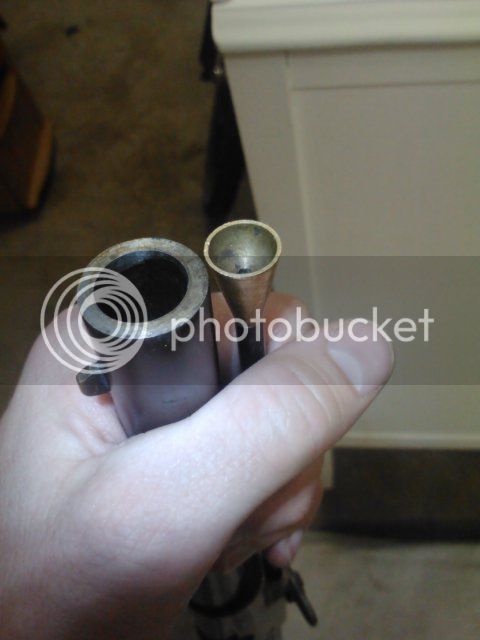- Joined
- Jan 31, 2009
- Messages
- 12,719
- Reaction score
- 6,848
Look at the uneven wear inside the bore.

jode said:Holy cow! Awesome. I thought that little pin piece at the very back of the sight was riveted into the barrel, but it is not. With your info above, I attempted to move it and sure enough, it popped over! Excellent. So now the question is, how to get it to stay there. It is not loose, but a slight bump will move the sight over. Can I just pop the whole sight out of the dovetail and re-bend it so that it presses down onto the barrel with more force? I can't imagine putting the work in to sight this in when a slight bump would knock it back out.
Brokenlaig said:at this point...I'd recommend replacing it.
jode said:From the way the light reflects off the barrel, there is no obvious bend. Take a look at these pics and let me know if you think this looks funny. Could this inconsistency inside the barrel end cause it to throw the bullet funny?

Enter your email address to join: